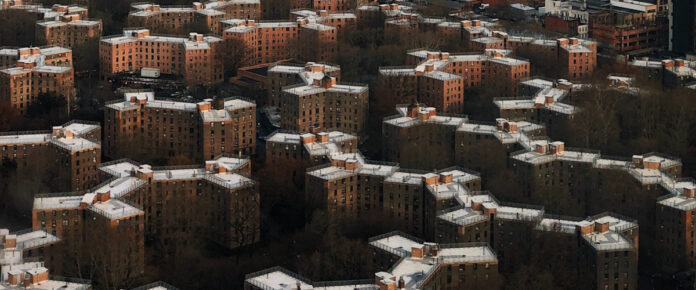The coronavirus is firmly entrenched on both coasts and appears to be spreading from the East Coast into the Midwest, with 16 states now exceeding 1,000 cases and only five states with fewer than 100.
Globally, the count now exceeds 615,000 with more than 28,000 dead. Italy alone will probably surpass 10,000 dead in the next 24 hours.
As of this morning, New York state has reported 46,004 cases COVID-19 cases, an increase 8,747, or 23 percent, in the past 24 hour. Close to 90 percent of all state cases are in the New York City Metrolitan area, subrubs and Long Island. Approximately 27,000 cases are in New York City.
In the past week, the New York metro area has torn past Seattle and cities in California that had early coronavirus infections to lead the country in COVID-19 cases.
Why? The simple answer is population density. The more in-depth answer is population density combined with lifestyle. For example:
Housing: Lots of New Yorkers live in high rise buildings packed with people and rely on elevators. Californians are more likely to live in garden style apartments that are probably only a couple stories and have stairs. (I’m making generalities here, so forgive me if you disagree, but the fact is New York has twice as many people as Los Angeles and they are squeezed into 40 percent less square miles.)
Transportation: Most Californians drive everywhere while most New Yorkers don’t own cars. In Los Angeles, daily ridership of their metro rail is about 350,000, about 8 percent of New York’s 4.3 million daily subway riders. New Yorkers also take a buses, taxis and ride share services. Even people who commute into the city from New Jersey, Westchester or Long island usually do so by train. Then they march through crowded stations like Grand Central or Penn Station. Even the sidewalks are crowded.
New York City is Ripe for Viral Spread
When I lived in New York, there were about 75 apartments in the building where I resided and one creaky old elevator. Everyone on my floor dumped their trash down the same trash chute. Everyone in the building used the same front door. I took an express bus into Midtown where I worked on the 23rd floor of a large office and rode the packed elevators up and down at least a couple times per day. There was one big public rest room on the floor, which was shared by multiple companies. Everywhere we went, we were packed in and lined up. Even restaurant tables are crammed together.
That lifestyle provides plenty of opportunities for a virus to spread. Compare that example to living in a townhouse or single-family home and driving your car to work. Outside of church, parties and other large gatherings, there are far less opportunity for the virus to spread in the burbs and even less in rural areas.
I enjoyed living in New York City as a young man fresh out of college and it helped start my career, but I don’t miss it. And I’m sure glad I became a pepper all those years ago and left! I’d hate to be self-quarantined in my tiny apartment.
Who’s Next?
Axios predicts: “A second wave of cities, including Boston, Detroit, New Orleans and Philadelphia, are seeing increases in confirmed coronavirus cases, and could become epicenters for the outbreak.”
I think we can add any densely-packed urban area with plentiful mass transit and apartment buildings that go up instead of spreading out. Places like Chicago and Atlanta. Common entrances, common conveyances, and shared personal space are dangerous when it comes to communicable diseases.
In Other News
Closing local roads, which we reported earlier in the week, continues:
- Florida, which had already put newly arriving New York residents into a two-week quarantine, closed the Florida Keys to visitors, shutting down the Overseas Highway, which is the only road leading into the keys.
- Rhode Island is using the National Guard and Police to stop cars with New York plates. The governor has also ordered them to go door-to-door, checking for New Yorkers that might be contagious.
- In Finland, police are setting up roadblocks around Helsinki, the country’s capital. But rather than keeping people out, these roadblocks are to keep people in. Helsinki is the country’s epicenter and they don’t want it to spread.
- When taken as a whole, Europe is faring worse than the U.S., with more than 300,000 coronavirus infections and a rising death toll. Both Italy and Spain are seeing increasing deaths due to COVID-19.
- Two days ago, I warned about coronavirus presenting opportunities for criminals to burglarize empty homes. I didn’t think to add restaurants to the list. (Although I have to ask, what business owner leaves cash in their restaurant when it is shut down?)








